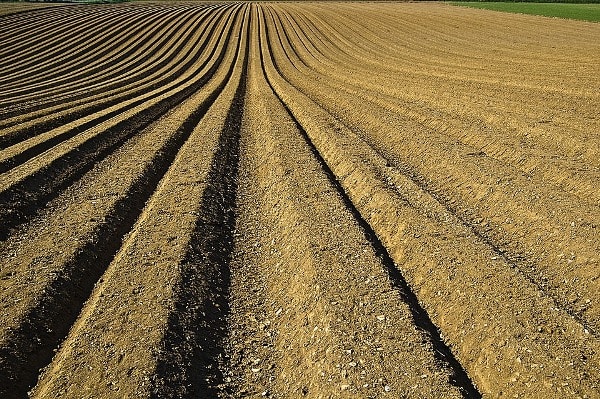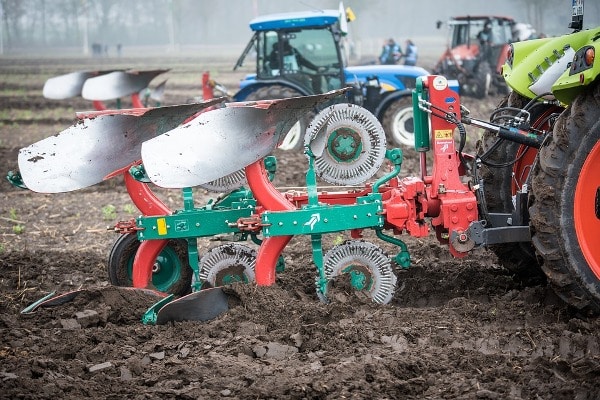Land preparation types, and techniques in agriculture
Today, we are going to discuss the land preparation types, methods, and objectives.
Land preparation or Tillage practice is a very important practice to enhance good yield from crops grown. It is one of the measures used to control crop diseases and pest invasion.
The purpose of land preparation is to provide the best soil conditions which will enhance the successful establishment of the tissue culture plants. It is one of the measures used to control crop diseases & pest invasion. Land preparation is also called as tillage practice; tillage practice is the mechanical pulverization or manipulation of the soil to take about favorable conditions for the growth of crops. Tillage practices include all operations used for the function of modifying the soil characteristics. It costs about 30% of the total cost of cultivation.
The objective of land preparation is to develop potential tree growth, survival, and uniformity of a crop about to be established (planted). Through proper land preparation, factors that limit tree growth are reduced. These factors will be included; You should be aware of land preparation types for proper implementation.
- Poor drainage
- Frost
- Weed competition
- Heavy slash
- Compacted or naturally dense soils
Land preparation improves site conditions in one or more of the following ways:
- Reducing weed competition for light and nutrients
- Improving soil, water, and air conditions through & water cultivation
- Loosening tight or compacted soils to allow
- Reducing frost susceptibility during mounding.

One must know about land preparation types in farming as it plays a major role in growing crops.
Tillage for soil conservation:
Tillage is an important and the main tool for conservation of the land. As per definition, its primary function is to provide a favorable soil environment for the plant growth, which is indirectly related to soil conservation. The effect of tillage on soil erosion is the purpose of its several effects on soil such as aggregation surface sealing infiltration & resistant to erosion, destruction of soil structure either by excessive tillage or tillage operations at improper soil moisture condition tends to raise the soil erodibility, causing significant soil loss. To achieve a better result for soil conservation the following points must be considered for tillage operations.
- Till no more than necessary
- Till only when soil moisture is in the good limit &
- Vary the depth of ploughing.
Tillage Depth:
A plowing depth in the 15-20 cm range is generally adequate, and there is seldom any advantage in going deeper. In fact, shallower plowing is often suggested for low rainfall areas like the Sahel to conserve moisture.
In some areas, tractor-drawn sub-soilers (long, narrow shanks that penetrate down to 60 cm) are used in an effort to break up deep hardpans (compacted layers). Results are fair to poor, depending on the kind of hardpan; those consisting of a dense clay coat often re-cement themselves within a short time.
Read: Geranium Oil Extraction Process.
About 65-80 percent of the reference crops’ roots are found in the topsoil since this layer is more fertile (partly due to its higher organic matter content) & less compacted than the subsoil. However, any roots that enter the subsoil can utilize its valuable moisture reserves, production a critical difference during a drought. Proper fertilization of the topsoil will support much deeper root development. On the other hand, poor drainage & excessive acidity in the subsoil will hinder or prevent root penetration.
Different land preparation techniques:
The different land preparation techniques distinguished are:
- Conventional Tillage
- Conservation Tillage
- Zero Tillage
Conventional Tillage:
Conventional tillage is the sequence of operations traditionally or most generally used in a given geographic area to produce a given crop. The operations used vary considerably for different crops & in different regions.
In the past, conventional tillage included moldboard plowing, usually in the fall. Spring action included one or more passes with a disk harrow or field cultivator before planting. More recently, conventional tillage has changed to contain the use of a chisel plow instead of a moldboard plow, and newer combination tools are replacing chisel plows. These implements leave additional residue than traditional moldboard plows, but often not enough to qualify as conservation tillage.
The soil surface following conventional tillage as practiced in the past was effectively free of plant residue. This was helpful with older planting equipment that had limited capability to plant into the residue. It also buried weed seed and disease-bearing crop & weed residue, thereby helping to reduce problems with weeds & plant diseases before the advent of modern chemical control.
The name clean tillage is used for any system that leaves the soil surface more or less free of residue. A soil surface essentially free of residues can be achieved with other implements, especially following a crop such as a soybean that produces fragile, easy-to-cover residue. Removing all residues from the soil surface & disturbing the soil surface greatly increases the potential for soil erosion. The potential for water erosion is fewer in flat fields, but the potential for wind erosion is high. Improved planters, seed quality, and herbicides have largely eliminated the want to practice clean tillage.

Minimum Tillage:
Minimum tillage is the small manipulation of the soil. It is otherwise referred to as traditional tillage process. It is not as sophisticated & technical as the conventional tillage. It involves the use of the cutlass to slash weeds & vegetation regrowth on the farm, the less manipulation is done with the how and rake.
Farmers with access to tractor- or animal-drawn tillage equipment may overdo tillage, particularly through repeated harrowing to control sprouting weeds or break up clods. Killing one crop of weeds by stirring the soil stimulates another by moving other weed seeds closer to the soil surface. Excessive tillage stimulates the microbial breakdown of humus & may further destroy good soil physical condition by over-pulverizing the soil, the machinery, animal, and foot traffic compact the soil, impairing root growth and drainage. Tillage is seldom excessive when hand tools are used to arrange ground for the reference crops, because of the amount of labor it would involve. Slash-and-burn and slash-and-mulch methods fall under zero tillage, as do methods using particularly adapted mechanical planters to sow seed into the unplowed ground. The plow or plant system described above or plowing & planting in one tractor pass are examples of minimum tillage. The savings on equipment wear and fuel are benefits where tractors are used.
Zero tillage practice:
Zero tillage otherwise called no tillage is a simplified form of minimum tillage. It involves only opening a narrow strip about 2 to 3cm wide or hole in the ground for seed or seedling placement. Zero tillage is no pre-planting seedbed preparation. Weeds are taken care of with the use of herbicides & cutlass without disturbing the land. The crop is then planted directly without tilling or ploughing the soil, this process is highly effective under sloppy lands where soil & water erosion are heavy.
In this method, the soil structure is not disturbed & all soil microorganisms remain intact, the soil is also not prone to erosion and the cost of production is reduced. However, the use of a chemical in this tillage method makes the cost of producing high because of the expensive prices of chemical and sometimes unavailable. Good tillage perform is one of the prerequisites to having a good yield.
Methods Involving No-Tillage or Seedbed Shaping:
Under conditions of shifting cultivation, low management or steeply sloping or rocky soils, the land is often cleared by simply slashing and burning, followed by making the seed holes with a planting stick or hoe. No attempt is completed to actually till the soil or to form a specific type of seedbed.
Slash, burn and plant: This process is most suitable for sandy soils which are naturally loose or for other soils that are maintained in good filth (a loose, crumbly situation) by a lengthy vegetative fallow which produces soil humus. It may be the feasible method for rocky soils or those with pronounced slopes where tillage would accelerate erosion.
Slash, mulch, and plant: This process is suited to the same conditions. The vegetation is slashed down or killed with an herbicide & then left on the surface to form mulch (a protective covering). The seeds can be planted in the ground or may even be scattered over the ground before slashing. The mulch is valuable for erosion & weed control, conserving soil moisture, and keeping soil temperatures more uniform.
That’s all folks for today about land preparation types in agriculture.
Read: Types of Gardening Soils.
Wonderful site Jagadish. I am starting a Hare Krishna farm in Texas, USA based on simple living and high thinking and reading vegetable, spice, and grain farming materials on your site. My only comment is that Jiva Himsa happens when you raise chicken, goats and then kill them. No one on the planet will starve if we all became Vegetarian. Consider publishing/encouraging Vegetarian farming only.
I have chosen to be an Agriculture land preparation, that methods help me achieve objective of being a farmer.